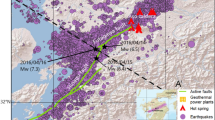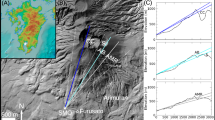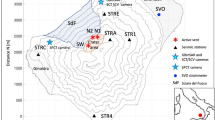Abstract
PROF. OMORI has recently (Bull. Imp. Earthq. Inves. Com., vol. 8, pp. 467–525) published his sixth, and apparently last, memoir on the eruption of Sakura-jima of January 12, 1914, and following days.—the greatest of all known eruptions in Japan, if greatness be measured by the amount of lava outflow and ash precipitation. The six memoirs fill a volume of 525 pages and are illustrated by 107 plates. They constitute, according to the author, “a modest geometrical and seismological report on the great Sakura-jima eruption of 1914, and tie course of the after-events followed for the next 8 years.” Prof. Omori's readers will, I imagine, take a somewhat different view. They are more likely to regard the volume as the finest monograph, from a physical point of view, that has ever yet been written on a volcanic eruption.
This is a preview of subscription content, access via your institution
Access options
Subscribe to this journal
Receive 51 print issues and online access
$199.00 per year
only $3.90 per issue
Buy this article
- Purchase on SpringerLink
- Instant access to full article PDF
Prices may be subject to local taxes which are calculated during checkout
Similar content being viewed by others
References
Vol. 94, p, 289; vol. 98, pp. 57–58; vol. 100, p. 35; vol. 106, pp. 165–166.
NATURE, vol. 92, 1914, p. 717.
Rights and permissions
About this article
Cite this article
DAVISON, C. The Eruption of Sakura-jima in 1914. Nature 111, 516–517 (1923). https://doi.org/10.1038/111516b0
Issue date:
DOI: https://doi.org/10.1038/111516b0



